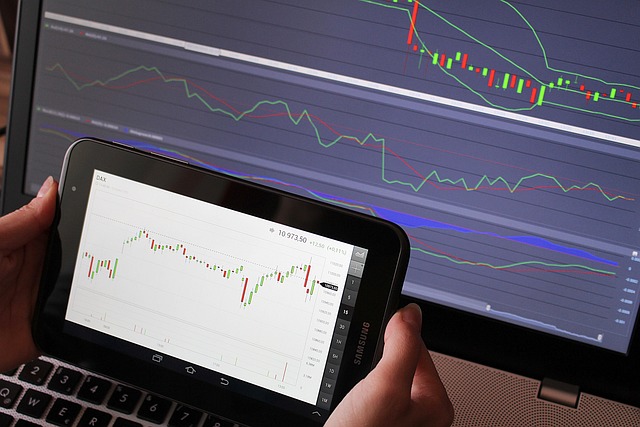Binance Chart Analysis AI: Smarter Crypto Trading Signals
Author: Jameson Richman Expert
Published On: 2025-11-08
Prepared by Jameson Richman and our team of experts with over a decade of experience in cryptocurrency and digital asset analysis. Learn more about us.
This comprehensive guide explains how to use binance chart analysis ai to extract high-probability trading signals, build reliable models, and deploy them safely. You’ll learn the data sources, model types (LSTM, Transformer, CNN, reinforcement learning), feature engineering strategies, backtesting best practices, and real-world deployment tips — plus links to tools, bots, and exchange registration pages so you can start practicing immediately.

What is Binance Chart Analysis AI?
“Binance chart analysis ai” refers to using artificial intelligence and machine learning to automatically analyze price charts, order-book data, and related market signals for assets traded on Binance (spot, margin, and derivatives). Instead of manual pattern recognition, AI systems learn from historical data to predict short-term price movements, volatility regimes, or optimal entry/exit points. These systems combine traditional technical indicators with modern sequence models and alternative data (order flow, funding rates, on‑chain metrics).
For background on the disciplines that power these systems, see the Wikipedia entries on technical analysis and machine learning.
Why use AI for Binance chart analysis?
- Pattern generalization: Models can detect non-obvious combinations of indicators and market microstructure features.
- Speed and scale: AI analyzes multiple pairs, timeframes, and indicators simultaneously.
- Adaptivity: Properly designed systems can adapt to regime changes via retraining or online learning.
- Quantitative decision-making: AI supports objective rules for entry, exit, and risk management.
How AI analyzes Binance charts — core pipeline
A production-grade binance chart analysis ai typically follows this pipeline:
- Data ingestion: Collect OHLCV, order book snapshots, funding rates, trades, and on‑chain metrics from Binance APIs and other sources.
- Feature engineering: Compute technical indicators (EMA, RSI, MACD), volume features (VWAP, OBV), order flow metrics and time-domain transforms.
- Modeling: Train sequence models (LSTM, Transformer), convolutional models on candlestick images, or gradient-boosted trees on engineered features.
- Validation & backtesting: Walk-forward tests, slippage & fees simulation, and stress testing across market regimes.
- Deployment: Paper trading, risk controls, live execution via Binance API, monitoring and retraining schedules.
Data sources and collection
Use Binance’s official API for accurate historical and real-time market data. Official docs are available on the Binance API documentation site (Binance API docs). For programmatic access, use libraries like python-binance or CCXT for multi-exchange compatibility. When collecting data, store timestamps in UTC, align bar closes and order book snapshots, and snapshot funding rates for derivatives trades.
Tip: Include exchange-level features such as funding rates, maker/taker fees, and liquidity depth because they materially affect strategy viability in derivatives and margin trading markets.

Models commonly used in Binance chart analysis AI
Different modeling approaches suit different objectives — short-term scalping, swing trading, or market-making. Common choices:
- LSTM / GRU: Good for sequence prediction on time series (short-to-medium horizons).
- Transformers: Increasingly used for long-range dependency capture in price series.
- CNN on candlestick images: Treat chart patterns as images and use convolutional networks to recognize shapes.
- Gradient-boosted trees (XGBoost, LightGBM): Effective on engineered features and robust with smaller datasets.
- Reinforcement learning (RL): For learning trading policies with explicit reward maximization, but requires careful simulation and risk constraints.
Example architecture
A practical architecture for mid-frequency signals:
- Input: Last N candles of OHLCV + recent order book imbalance + 10 technical indicators.
- Feature encoder: 1D convolutions + layer norm.
- Sequence model: Transformer encoder with positional embeddings.
- Output head: Classification (up/down/no-trade) or regression (expected return) plus uncertainty estimate.
Key indicators and features to feed your AI
AI benefits from diverse, orthogonal features. Combine price action, volume, volatility, and microstructure features:
- Price & momentum: EMA, SMA, MACD, RSI, Stochastic.
- Volatility: ATR, historical volatility, Bollinger Bands width.
- Volume & flow: VWAP, On-Balance Volume (OBV), volume delta (buy vs sell trades).
- Order book: Bid/ask depth, top-of-book imbalance, iceberg detection.
- Derivative signals: Funding rates, open interest (for futures), basis between spot and perp markets.
- On-chain metrics: Exchange inflows/outflows, active addresses for major tokens (useful for BTC/ETH regime shifts).
Combine raw features with engineered ratios (e.g., OBV / volume) and short-term/long-term feature pairs to help models detect divergences.
Building a binance chart analysis ai step-by-step
Below is a practical, actionable roadmap from idea to live trading:
- Define objective: Decide timeframe, markets (spot/futures), and metric to optimize (Sharpe, Sortino, net profit factor).
- Collect and store data: Use Binance API, CCXT, or exchange-level streams. Ensure robust backup and data validation.
- Exploratory data analysis (EDA): Visualize seasonality, volatility clusters, and indicator distributions.
- Feature engineering: Create multi-resolution features: minute/5m/1h, indicator crossovers, order-flow signatures.
- Train baseline models: Start with simple models (logistic, RF) as baselines, then move to deep learning.
- Backtest with realistic costs: Include bid-ask spread, maker/taker fees, slippage, and funding payments for perpetuals.
- Paper trade: Forward-test on live markets without real capital or with tiny sizes to validate execution assumptions.
- Deploy with risk controls: Position limits, max drawdown stop, circuit breakers, and automatic kill switches.
- Monitor and retrain: Set retraining cadence, drift detection, and live performance dashboards.
If you’re interested in automated trading bots and integration with GitHub-hosted strategies, see the ultimate crypto trader bot GitHub guide for a practical starting point.

Backtesting — avoid common pitfalls
Backtesting is where many AI trading projects fail. Avoid these pitfalls:
- Data leakage: Ensure your training features do not use future information (lookahead bias).
- Unrealistic fills: Model fills considering order book depth, not just mid-price.
- Fees & slippage: Use conservative slippage models based on historical tick data and liquidity.
- Survivorship bias: Include delisted / low-liquidity periods if applicable.
- Overfitting: Prefer simpler models or stronger regularization; use walk-forward validation.
Fees can materially change results. For example, for Bitcoin and other high-liquidity coins, network and exchange fee environments evolve — read about Bitcoin low fees explained (2025) to understand transaction cost trends that affect on-chain and exchange-based strategies.
Risk management, compliance, and ethics
Risk management is as important as the model. Include:
- Position sizing rules (Kelly fraction conservative derivatives).
- Max drawdown triggers and daily trade limits.
- Margin checks and maintenance for leveraged instruments.
- Regulatory and compliance review for your jurisdiction (tax reporting, KYC requirements).
If you are considering margin or leveraged strategies, be aware of ethical and jurisdictional discussions — for instance, margin trading’s permissibility is discussed in depth in various communities; see a practical discussion at Binance margin trading: Halal or haram? for more context prior to deploying leveraged AI strategies in sensitive contexts.
Execution and infrastructure
Execution quality separates backtest results from live performance. Key components:
- Order management system (OMS): Queue trades, handle partial fills, and retry logic.
- Rate-limit handling: Respect Binance REST and WebSocket rate limits.
- Retry & reconciliation: Reconcile local and exchange positions frequently to avoid drift.
- Latency considerations: If trading high-frequency strategies, colocate or use low-latency cloud regions.
For beginners who want to register and test on exchanges, use these official registration links:

Practical example: Building a short-term signal model
This sample use-case shows how to combine indicators and an LSTM to generate short intraday signals.
- Collect 1-minute OHLCV for BTC/USDT for the last 2 years.
- Compute features: 5/20/60 EMA, RSI(14), ATR(14), volume delta, order book imbalance at T.
- Label creation: Target = 1 if 5-minute forward return > 0.2% (after fees), -1 if < -0.2%, else 0.
- Model: 2-layer LSTM with dropout, softmax output for 3 classes, categorical cross-entropy loss weighted to handle class imbalance.
- Backtesting: Use live-like simulation with order book-based slippage and maker/taker fees; evaluate precision, recall, profit factor, and Sharpe ratio.
- Risk rules: Max 1% of account per trade, aggregate exposure limit 3% of account, stop-loss at 0.5% and trailing stop after 0.3% in profit.
Interpretability: Use SHAP or integrated gradients to understand which features drive predictions so you can validate the model’s logic against market intuition.
Monitoring, retraining, and live maintenance
Set up the following for robust ops:
- Dashboards: Real-time P&L, trade logs, model confidence, and exposure markers.
- Alerting: On model drift, performance degradation, API errors, or unusual fills.
- Retrain cadence: Weekly or monthly retraining depending on strategy horizon; keep a validation holdout to avoid forgetting long-term patterns.
Legal, tax, and safety considerations
Automated trading may have tax implications and regulatory requirements depending on jurisdiction. Maintain detailed trade logs and consult a licensed tax professional. Treat all content here as educational — not financial advice.

Tools, libraries, and further reading
Useful open-source tools and libraries:
- Pandas, NumPy — data processing
- TA-Lib or ta — technical indicators
- python-binance, CCXT — exchange API wrappers
- TensorFlow, PyTorch — deep learning
- XGBoost, LightGBM — tree-based models
- Backtrader, Zipline, vectorbt — backtesting frameworks
For automated deployment, many developers use GitHub to manage code and CI/CD pipelines. For a practical example on integrating trading strategies with GitHub projects and bots, check the ultimate crypto trader bot GitHub guide.
Common FAQs about Binance Chart Analysis AI
Is AI better than traditional technical analysis?
AI can outperform in complex pattern recognition and combining many input signals, but its success depends on data quality, model discipline, and realistic assumptions. Traditional techniques are simpler, more explainable, and often used as features inside AI models.
How much data do I need?
More data helps but quality matters more than quantity. For intraday models, several months to years of tick/bar data is common. Use data augmentation and careful validation for scarcity.
Can I use AI for high-frequency trading (HFT) on Binance?
Technically possible, but HFT requires specialized infrastructure, co‑location, extremely low-latency execution, and institutional-level risk controls. Retail setups should start with lower-latency tolerant strategies.
How do fees and network costs affect AI strategies?
Fees and slippage can turn winners into losers. Monitor exchange fee schedules and network costs (especially for on-chain interactions). Read up on evolving cost structures, such as in this summary on Bitcoin low fees explained (2025).
Ethical and cultural considerations
Some strategies—particularly margin and derivatives trading—raise ethical and cultural questions depending on beliefs and local laws. If you need religious guidance on margin practices, see discussions like Binance margin trading: Halal or haram?. Always consider fiduciary duties, transparency, and the potential market impacts of automated strategies.

Further reading and authoritative references
- Binance developer documentation and API references provide authoritative technical details for building ingestion and execution layers (see official Binance docs).
- For theory on backtesting and risk management, Investopedia and academic literature on financial econometrics are useful starting points. Technical analysis — Wikipedia provides an accessible overview.
Conclusion — starting your binance chart analysis ai journey
Building a robust binance chart analysis ai system requires attention to data fidelity, thoughtful feature design, realistic backtesting, and strict risk controls. Begin with clear objectives, validate with paper trading, and scale gradually. Use the practical tools and guides linked above to accelerate development — for bot integration, see the GitHub bot guide, and for fee and ethics considerations consult the linked resources on transaction costs and margin trading.
If you want to test strategies on real exchanges, use the registration links to open accounts: Binance, MEXC, Bitget, and Bybit.
Disclaimer: This article is educational and informational only. It is not financial, investment, or tax advice. Backtest thoroughly and consult qualified professionals before risking capital.